Related Research Articles

Enzo Anselmo Giuseppe Maria Ferrari was an Italian motor racing driver and entrepreneur, the founder of the Scuderia Ferrari Grand Prix motor racing team, and subsequently of the Ferrari automobile marque. Under his leadership, Scuderia Ferrari won nine drivers' world championships and eight constructors' world championships in Formula 1 during his lifetime.

Alberto Ascari was an Italian racing driver, who competed in Formula One from 1950 to 1955. Ascari won two Formula One World Drivers' Championship titles, which he won in 1952 and 1953 with Ferrari, and won 13 Grands Prix across six seasons. In endurance racing, Ascari won the Mille Miglia in 1954 with Lancia.

Lancia is an Italian car manufacturer and a subsidiary of Stellantis Europe, which is currently a Stellantis division. The present legal entity of Lancia was formed in January 2007 when its corporate parent reorganised its businesses, but its history is traced back to Lancia & C., a manufacturing concern founded in 1906 in Torino by Vincenzo Lancia (1881–1937) and Claudio Fogolin. It became part of Fiat in 1969.

Emilio Giuseppe "Nino" Farina was an Italian racing driver, who competed in Formula One from 1950 to 1956. Farina won the Formula One World Drivers' Championship in its inaugural 1950 season with Alfa Romeo, and won five Grands Prix across seven seasons.

The Italian Grand Prix is the fifth oldest national motor racing Grand Prix, having been held since 1921. Since 2013, it has been the Grand Prix held the most times, with 93 editions as of 2023. It is one of the two Grands Prix which has run as an event of the Formula One World Championship Grands Prix every season, continuously since the championship was introduced in 1950. Every Formula One Italian Grand Prix in the World Championship era has been held at Monza except in 1980, when it was held at Imola.

The 1953 Formula One season was the seventh season of the FIA Formula One motor racing. It featured the 4th World Championship of Drivers, which was contested over nine races between 18 January and 13 September 1953. The season also included several non-championship races and a separate East German Championship.
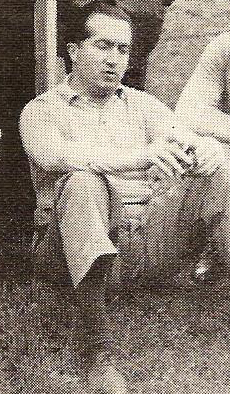
The 1952 Formula One season was the sixth season of FIA Formula One motor racing. It featured the 3rd World Championship of Drivers, which was contested over eight races between 18 May and 7 September 1952. The season also included several non-championship races and a separate East German Championship.

The 1951 Formula One season was the fifth season of FIA Formula One motor racing. It featured the second World Championship of Drivers, which was contested over eight races between 27 May and 28 October 1951. The season also included several non-championship races for Formula One cars.
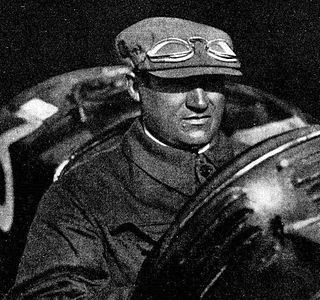
Antonio Ascari was an Italian Grand Prix motor racing champion. He won four Grands Prix before his premature death at the 1925 French Grand Prix. He was the father of two-time World Champion Alberto Ascari.

Carrozzeria Touring Superleggera is an Italian automobile coachbuilder. Originally established in Milan in 1925, Carrozzeria Touring became well known for both the beauty of its designs and patented superleggera construction methods. The business folded in 1966. In 2006 its brands and trademarks were purchased and a new firm was established nearby to provide automotive design, engineering, coachbuilding, homologation services, non-automotive industrial design, and restoration of historic vehicles.
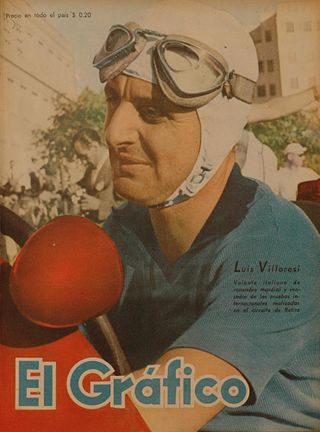
Luigi Villoresi was an Italian racing driver. He competed in Formula One at the time of its inception.

The Auto Avio Costruzioni 815 was the first car to be fully designed and built by Enzo Ferrari. Legal issues with former associates Alfa Romeo prevented Ferrari from creating the Ferrari marque. The 815 raced at the 1940 Brescia Grand Prix, where both entries failed to finish due to engine problems. One of the cars was later scrapped, while the other is currently in a car collection in Italy.

The Ferrari 500 was a Formula 2 racing car designed by Aurelio Lampredi and used by Ferrari in 1952 and 1953, when the World Championship was run to F2 regulations.

After finding only modest success with the supercharged 125 F1 car in Formula One, Ferrari decided to switch for 1950 to the naturally aspirated 4.5-litre formula for the series. Calling in Aurelio Lampredi to replace Gioacchino Colombo as technical director, Enzo Ferrari directed that the company work in stages to grow and develop an entirely new large-displacement V12 engine for racing.

The Ferrari 250 S was a sports racing car produced by Ferrari in 1952. It was the first in the long lineage of Ferrari 250 road and race cars powered by a ubiquitous 3.0-litre Colombo V12 engine. In 1952 the 250 S won the Mille Miglia and 12 Hours of Pescara. At the Le Mans, the same year, it clocked the fastest race lap time. Only a single example was produced.
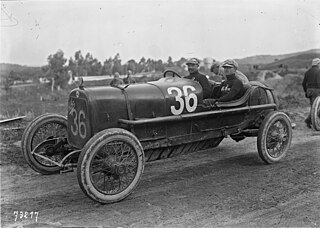
Ugo Sivocci was an Italian racing driver.
The Turin Motor Show is an auto show held annually in Turin, Italy. The first official show took place between 21 and 24 April 1900, at the Castle of Valentino, becoming a permanent fixture in Turin from 1938 having shared it with Milan and Rome until that time. From 1972, the show was held biannually and in 1984, it moved into Fiat's shuttered Lingotto factory.

The Lancia D50 was a Formula One racing car designed by Vittorio Jano for Lancia in 1954. The car's design made use of many innovative features, such as the use of the engine as a stressed chassis member, the off-centre positioning of the engine to allow a lower overall height, and pannier fuel cells for better weight distribution and aerodynamics. Six of the cars were built, and two of them are displayed in Italian museums.
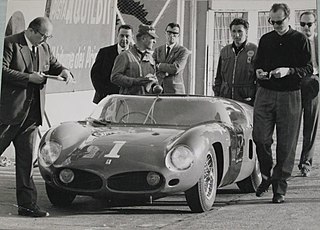
Romolo Tavoni was an Italian sports executive best known for his work at Ferrari.

The 3rd Gran Premio di Modena was a Formula Two motor race held on 14 September 1952 at the Autodromo di Modena, Italy. The race was run over 100 laps of the circuit, and was won by Italian driver Luigi Villoresi in a Ferrari 500 in a near dead-heat with José Froilán González in a Maserati A6GCM. Villoresi and Gonzalez shared fastest lap. Sergio Sighinolfi and Alberto Ascari shared third place in a Ferrari 500. Ascari had started from pole but retired with mechanical problems, and took over Sighinolfi's car.